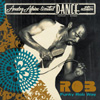
These two albums mark the beginning of Analog Africa's new "Limited Dance Edition" series, veering away from compilations into reissues of long-deleted full albums by artists that played an integral role in shaping founder Samy Ben Redjeb's aesthetic. The endeavor is off to an excellent start, adding some strong rarities to the available oeuvre of one of the milieu's best-known bands and unearthing an absolutely killer effort from the amazing but seldom heard Rob.
- Administrator
- Albums and Singles
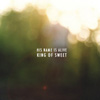
There are a number of fine albums scattered throughout Warren DeFever's curious and eccentric discography, but my favorite work of his has always been the first few His Name is Alive albums. King of Sweet, now reissued, is a fake bootleg of sorts dating from that extremely fertile period.  While it contains obvious snatches of Home is in Your Head and some later work, everything has been recontextualized, repurposed, and abstracted to such a degree that it seems completely fresh and new.  The fact that a "lost" album from HNIA's golden years has finally resurfaced after nearly two decades is certainly cause for excitement, but the real revelation here is that it just might be DeFever's masterpiece.
Handmade Birds/Silver Mountain Media
The history of this album is somewhat strange and shadowy, as it was initially released by Perdition Plastics in 1993 as a purported compilation of cassette releases spanning from 1990 to 1992.  This claim is repeated on the current Handmade Birds vinyl reissue sleeve, but the Handmade Birds and Silver Mountain Media websites both state that it is actually culled from early recordings and demos of Home is in Your Head.  The reality is probably that both are true: Warren recorded (and possibly released) a string of extremely limited tapes (Hucklebuck, Love Can't Buy Happiness, Blissfield, Mouth, and New Stars, New Tongue) that were ultimately cannibalized, revisited, and perfected over the next several years.  The end result does not sound at all like a batch of unrelated pieces that were thrown together, however.  While there are few songs that could possibly pass for singles ("Weekend," for example), this album is such a coherent, flowing whole that it demands to be listened to in its entirely.
Yet another interesting facet to the story is that the first two His Name is Alive albums (Livonia and the aforementioned Home) were mixed and edited into "proper albums" by Ivo Watts-Russell and Jon Fryer after DeFever finished them.  Consequently, it is likely that the more surreal and collage-like King of Sweet is a more accurate depiction of DeFever's vision at the time than his formal 4AD releases.  At the very least, Warren was fond enough of the album to remaster, extend, and reissue it on his own label in 2005.
King of Sweet is dreamlike and experimental in a way that can probably only be achieved through years of endless tweaking and reediting, as it manages to be uncompromisingly weird and psychedelic while still maintaining strong hooks and an appealing pop sensibility.  These are undeniably catchy songs, but the genius is that they don't sound even remotely like they were performed by a band playing together in a room.  Nothing quite sounds like it is expected to: sounds pan, drop out, or swell unpredictably; vocals layer, echo, and dissipate; structures appear and dissolve; some birds and crickets turn up; the drummer sounds like he is playing in a different band several houses away; everything suddenly starts playing backwards; a funky hip hop loop drifts into an melancholy ambient passage; the band abruptly launches into a Neil Young riff...pretty much anything is possible at any time.  Yet somehow it all sounds perfectly natural in an unnatural way.  As bizarre and fractured as everything is, it still feels strangely comforting and familiar.  The secret (or one of them, at least) seems to be that there are many threads that reappear throughout the album to link everything together.  The most obvious one is that the refrain from Home is in Your Head's "Are You Coming Down this Weekend?" pops up in three or four songs, but I am sure there are many, many others.  This is an album that could take years to fully deconstruct.
Obviously, a double album of collaged alternate takes has the potential to get extremely boring extremely quickly, and I would probably avoid such a thing in most other cases (though I think Swans and Current 93 could pull it off).  However, this is clearly the album that DeFever was born to make.  Everything His Name is Alive excelled at in the early '90s (chanted, somnambulant-sounding female vocals; strangely disjointed instrumentation; haunting melodies, artful layering and processing; unexpected snarls of noise, etc.) lends itself extremely well to a warm and bittersweet long-form suite of deep, enveloping psychedelia such as this.  I do not foresee myself growing tired of this any time in the near future.  King of Sweet is absolutely essential.
Samples:
Read More
- Administrator
- Albums and Singles
 This Will Destroy You's self-titled debut was a fantastic and satisfying collage of familiar sounds, but it didn't prepare me for the depth of their latest LP. While other instrumental rock bands seem to be writing shorter, more compact songs, TWDY is now airing it out in grandiose fashion.
This Will Destroy You's self-titled debut was a fantastic and satisfying collage of familiar sounds, but it didn't prepare me for the depth of their latest LP. While other instrumental rock bands seem to be writing shorter, more compact songs, TWDY is now airing it out in grandiose fashion.
 
Tunnel Blanket is immediately darker and more willing to take chances than any of the band's previous efforts. The record opens with a 12 minute opus wherein a chaotic wall of guitar smashes its way out of stillness beautifully. The dynamic shift from quiet and contemplative to blisteringly loud isn't particularly unexpected, but the shifts are handled gracefully here and each ramp up, fade out, or jump cut is somehow earned by the emotional current that runs through songs like "Little Smoke."
Leaving the dynamics behind, "Glass Realms" finds the band simply shimmering off into the ether, only to return to rock n roll form with "Communal Blood," a song that uses three of its eight minutes to brood before it storms. "Killed the Lord, Left For the New World" shows off the band's subtle integration of electronic loops, samples, and percussion which are some of the small touches that I've always loved about This Will Destroy You's sound. The song veers off with a marching cadence that (once again) isn't unheard of in this particular part of the popular music spectrum, but when it further spins out into a wash of overtones and arhythmic drones, the band demonstrates their maturity by creating something still unexpected.
"Black Dunes" is as heavy and somber as its title suggests, and it's one of the songs on this record that elevate This Will Destroy You above that tier of generic post-rockers who simply noodle on a chord and make it louder and louder. "Black Dunes" feels driven by real angst, its steady wash of crash cymbals and grinding, bleak guitar fighting for every ounce of dynamic range. When the song ends with softened notes ringing out into the void, the whole thing feels like a completed journey through a darkly unforgiving landscape.
The record closes with "Powdered Hand," a surprisingly restrained coda to an album that contains a fair amount of bombast. Comparisons between This Will Destroy You and some of their peers and influences are fair and will be unavoidable in an age where every MP3 is tagged with classifying adjectives. Still, Tunnel Blanket is an announcement that this small band from Texas has something unique and powerful to say.
samples
Read More
- Administrator
- Albums and Singles
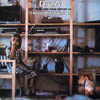 By its very nature D.o.A. is probably the messiest and least cohesive of the TG catalog. Assembled from the same mix of live and studio performance recordings that made up Second Annual Report, there is just a greater amount of stylistic shifts here compared to its predecessor.  It was followed by 20 Jazz Funk Greats, which constitutes the first true "album" from TG. That disjointedness though is what always drew me into this album, making it among my favorites they ever recorded.
By its very nature D.o.A. is probably the messiest and least cohesive of the TG catalog. Assembled from the same mix of live and studio performance recordings that made up Second Annual Report, there is just a greater amount of stylistic shifts here compared to its predecessor.  It was followed by 20 Jazz Funk Greats, which constitutes the first true "album" from TG. That disjointedness though is what always drew me into this album, making it among my favorites they ever recorded.
Looking back, Second Annual Report has an undeniable sense of evil enshrouding it, but presented in such a way that either resembles the cold, detached sterility of a government document (hence the title), or the intentional, secretive sparseness of illicit pornography.D.o.A., on the other hand, seems excised from day to day life, yet still pervaded by that sinister undercurrent, although in a more subversive manner.
The cover art exemplifies this perfectly:the late 1970s era photograph of a young girl sitting in front of a hi-fi system is so normal and mundane that it could be the cover of a catalog, yet the small inset of a child posed in an undeniably pedophilic image turns the everyday into the disturbing, which was exacerbated by the calendar of similar images included with early pressings.
A sizable portion of the audio follows the same trajectory.The audio data culled off of a found cassette on "IBM" surely sounds familiar to any curious individual who had an early tape-based personal computer, but the blips are eventually paired with ghostly, disembodied noises that are far less familiar.The shimmering, beautiful synths of "AB/7A" also come across as disarmingly conventional and pleasant, but within the context of the album feels like it must have some sort of malevolence lurking beneath it.
That track, a Chris Carter solo work, is one of four pieces in which each member created and recorded their own songs.Genesis P-Orridge's "Weeping" is disembodied layers of echoing violin sounds and flat vocals, while both Cosey Fanni Tutti ("Hometime") and Peter Christopherson ("Valley of the Shadow of Death") employ dialog recordings.The former feels more "day in the life" due to the kids talking paired with Cosey’s ambient guitar playing, conjuring images that Tutti’s life outside of the band was shockingly normal and not one fit for a "wrecker of civilization."Christopherson's work, on the other hand, puts the conversations just out of hearing range, and with the tape treated electronic passages added, seems much more secretive and illicit.
As far as disturbing goes, one of the most exemplary tracks of this, "Hamburger Lady," appears at the center of this album.One of the band’s most famous compositions, it’s synthetic swells and heartbeat like percussion create the perfect tense backing for Genesis' spoken word narrative about a burn victim and processed violin.Even over 30 years later, there are few songs that reach the same level of creepy after repeated listenings.
Amongst these are a slew of sonic sketches, many culled from live performances that are of varying quality.The short "Hit By A Rock" and "Blood on the Floor" are a few of the band’s most "rock" moments, the latter being a slowed down take on "Zyklon B. Zombie," with different lyrics.The band's often-ignored sense of humor also appears here with the inclusion of "United."A 7" released before D.o.A., it was a rather accessible, catchy proto-synth pop song that garnered them some positive attention in the music world.As was the norm in the industry, they included it on the album, but sped up to be less than 17 seconds long.
Like the other albums, a remastering was definitely needed, as the original Grey Area/Mute discs had a noticeably low volume level and just an overall muffled, flat sound.The second disc here covers a lot of the same territory as the Live Volume 2 compilation, and the "We Hate You"/"Five Knuckle Shuffle" single.Not surprisingly, the live material from this era follows a similar sound to the album, from the creepy stretched out ambience of "It’s Always the Way" to the wet, rhythmic throb of "Industrial Muzak."
A live take of "Hamburger Lady" is also included, but I always felt it lacked the subtlety of the studio version."IBM," however, is an extended take of pulsing electronics and jagged guitar that utterly overshadows the version that opens the album.Sadly, the full version of "D.o.A." from the era isn’t included, which is much longer and varied than the still enjoyable album take that’s included.
Although it feels less like an album and more like a compilation, which is what it essentially is, D.o.A. remains one of my favorite moments in the TG catalog, largely due to its complete comfort in jumping from answering machine death threats to gorgeous synth pop to pure white noise.While I can completely understand why many favor Second Annual Report or 20 Jazz Funk Greats, this one just always stands a bit higher for me.
samples:
 
Read More
- Administrator
- Albums and Singles
 By my count, Rutger Zuydervelt has logged nearly 100 releases since Machinefabriek's inception in 2004, making it extremely easy for his best work to get missed or overlooked.  Fortunately, this one managed to catch my attention, as Davis's skwonking contrabass clarinet may very well be the perfect foil for Rutger's somber drones and crackles.  The likable first half of this improvised collaboration was recorded back when the duo first met in 2009 and has already been issued once as a limited 3" CDr, but the truly excellent second half came together more recently and makes its first appearance here.
By my count, Rutger Zuydervelt has logged nearly 100 releases since Machinefabriek's inception in 2004, making it extremely easy for his best work to get missed or overlooked.  Fortunately, this one managed to catch my attention, as Davis's skwonking contrabass clarinet may very well be the perfect foil for Rutger's somber drones and crackles.  The likable first half of this improvised collaboration was recorded back when the duo first met in 2009 and has already been issued once as a limited 3" CDr, but the truly excellent second half came together more recently and makes its first appearance here.
The 23-minute "Ghost Lanes," which consumes the entire first side of this album, is by far the more abstract of the two pieces and definitely betrays its improvised origin.  Rutger plays guitar, but it is rarely recognizable as such for the first ten minutes or so.  Instead, he slowly builds a sound bed from loops of sundry crackles, scrapes, and amp noises, leaving the melodic heavy lifting to Davis.  Gareth makes a valiant effort, but he is basically adrift in pretty formless and uninspiring territory.  As a result, "Ghost Lanes" is essentially a heavily reverbed clarinet solo subtly augmented by a low repeating swell and Zuydervelt's textural contributions.  There isn't much of a flow to it, but Gareth's oft-sputtering playing is still unpredictable and inventive enough to keep me interested, especially during the moments where he closely approximates an upset and disoriented elephant.  While Rutger's playing becomes a bit more prominent near the end of the piece, his single repeating notes and muted swells are ultimately too minimalistic to leave much of an impression on me.
The 16-minute "Mackerel Sky" is an entirely different story, however.  Zuyderwelt's playing remains extremely minimal in nature, but instantly creates a tense and melancholy mood with just two repeating harmonics that hypnotically shudder and oscillate.  Gradually, he fills out the sound with spectral swells and a masterful array of fluttering and billowing guitar noises.  Gareth is more restrained this time around, which makes perfect sense, as the simmering bed of uneasy guitar shimmer could easily stand on its own.  He's not merely along for the ride though: his fluid minor key runs and intermittent strangled squawks enhance Machinefabriek's brooding atmosphere nicely and provide the piece with much of its satisfying dynamic arc.  The fact that it even has a dynamic arc is pretty noteworthy in itself: "Mackerel Sky" escalates and ebbs surprisingly effectively for an improvisation, despite the fact that the slow-burning build-up is more powerful than the actual crescendo.  Davis and Zuydervelt intertwine and complement other remarkably intuitively for two artists that rarely play together–it's a great piece.
That said, Ghost Lanes will probably not induce me to immediately plunge headlong into Davis and Zuyderwelt's solo discographies, as it seems like this collaboration (the "Mackerel Sky" half, at least) is quite a bit more than the sum of its parts.  Still, I could probably not ask for a more impressive introduction to Gareth's work and I now wonder what other treasures I've missed in Rutger's vast discography.  This isn't quite an unqualified success, but it definitely has some sustained flashes of greatness: I have rarely heard free-jazz and drone music intersect as seamlessly and enjoyably as they do during Ghost Lanes' best moments.
Samples:
 
 
Read More
- Administrator
- Albums and Singles
 The flood of unreleased Celer material seems to have subsided a bit in recent months, but a steady posthumous trickle of Dani Baquet-Long's solo recordings has now appeared in its wake.  To my ears, the aesthetic difference between Celer's drifting drone and Chubby Wolf is negligible at best, but Turkey Decoy reaffirms my belief that most of the best Celer-related material is reserved for their vinyl releases (of which this is one).  This easily stands among Dani's finest albums.
The flood of unreleased Celer material seems to have subsided a bit in recent months, but a steady posthumous trickle of Dani Baquet-Long's solo recordings has now appeared in its wake.  To my ears, the aesthetic difference between Celer's drifting drone and Chubby Wolf is negligible at best, but Turkey Decoy reaffirms my belief that most of the best Celer-related material is reserved for their vinyl releases (of which this is one).  This easily stands among Dani's finest albums.
Articulating the difference between Baquet-Long's excellent work and her lesser work has always been an extremely difficult task, as the individual instruments are almost always processed into an amorphous, warm blur of sustained drones in either case.  I guess great Celer/Chubby Wolf songs simply sound a bit deeper, darker, and more finished than usual, traits that several of these songs possess  Additionally, Turkey Decoy boasts some subtly enhanced variety for a Baquet-Long release.
For example, Dani sometimes allows natural-sounding piano notes or unexpected interludes of dialogue or field recordings to emerge from the haze, but such elements tend to be used only for color, texture, or transition: the heart of these pieces is still invariably glacially swelling sustained drones.  Dani was obviously no slouch at composing excellent drone music, but I find any divergence from the Celer template to be especially welcome after so many similar releases.  Aside from the novelty factor, however, I genuinely  enjoy the "non-musical" components of her work in general, as they provide a welcome contrast to the languid drones and add a little bit of mystery and surreally ambiguous context.  Also, sometimes they just sound great, like the barking dog that accompanies the ominous opening thrum of "Intrusively Coexisting."
Happily, Dani went a bit further than her standard fare on quite a few pieces. The aforementioned "Intrusively Coexisting" is probably my favorite piece on the album due to its unexpected menace, but the opening "Cantankerous Baby" is similarly successful at evoking brooding unease.  I was also quite fond of "Sushi On A Hot Day," which nicely augments its languid reverie with a cricket-like chatter.  Even the less adventurous pieces here are quite good though–this is simply a very solid and thoughtfully sequenced batch of songs that drifts along in sublimely dreamlike fashion.  In fact, I think I prefer this to several of Celer's more beloved releases.  I did not expect that at all: given how hugely prolific Dani and Will were during Celer's lifetime, it seems almost astonishing that some of Dani's best work is just now being released.
Samples:
 
Read More
- Administrator
- Albums and Singles
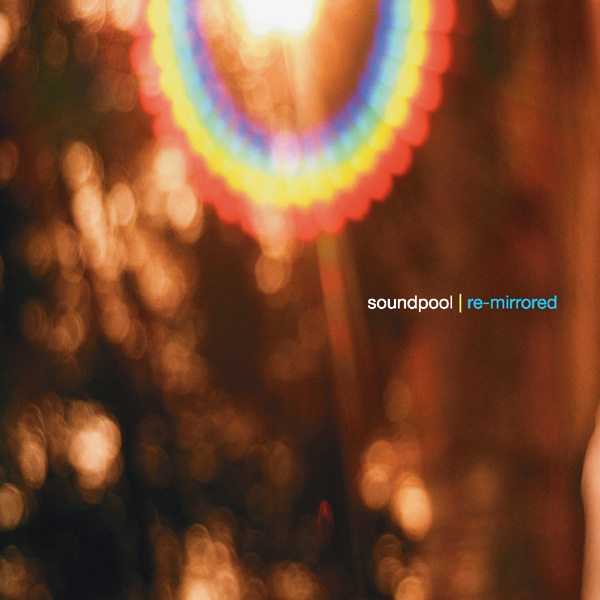 Soundpool follow their critically acclaimed 2010 album Mirrors In Your Eyes with this fantastic limited CD EP (Killer Pimp will only sell 500 copies) of six remixes and reinterpretations. Syntaks, Strategy, GTO, Screen Vinyl Image, Colder, and Lawrence Chandler (of Bowery Electric fame) have all twisted and turned these soon-to-be-classic pop gems around and infused them with new life. Available separately or FREE with a purchase of the Mirrors In Your Eyes LP while supplies last.
Soundpool follow their critically acclaimed 2010 album Mirrors In Your Eyes with this fantastic limited CD EP (Killer Pimp will only sell 500 copies) of six remixes and reinterpretations. Syntaks, Strategy, GTO, Screen Vinyl Image, Colder, and Lawrence Chandler (of Bowery Electric fame) have all twisted and turned these soon-to-be-classic pop gems around and infused them with new life. Available separately or FREE with a purchase of the Mirrors In Your Eyes LP while supplies last.
- Shelter (Syntaks)
- Mirrors In Your Eyes (Strategy)
- Sparkle in the Dark (GTO)
- Listen (Screen Vinyl Image)
- But It's So (Colder)
- I'm So Tired (Lawrence Chandler)
"an enjoyable, stylish record" - Tiny Mix Tapes
"both exemplary and blindingly excellent" - Delusions of Adequacy
"An unstoppable sugar rush for the ears" - Textura
"This is music you haphazardly pogo stick to in the middle of a barely-lit club while psychedelic light stencils flash erratically over you and your posse. " - Alget Eaters
Read More
- Administrator
- Albums and Singles
 Despite running a serious reissue campaign for Cluster and related releases, I am surprised that Bureau B have only come around to reissuing the first Cluster LP now. Featuring the core duo of Dieter Moebius and Hans-Jochim Roedelius, their debut also features the legendary Conny Plank both as a performer and as producer. This is the definitive reissue, it restores the original running order of the album and, best of all, it still sounds exceptional.
Despite running a serious reissue campaign for Cluster and related releases, I am surprised that Bureau B have only come around to reissuing the first Cluster LP now. Featuring the core duo of Dieter Moebius and Hans-Jochim Roedelius, their debut also features the legendary Conny Plank both as a performer and as producer. This is the definitive reissue, it restores the original running order of the album and, best of all, it still sounds exceptional.
The opening piece, "7:42," set the template for abstract electronic music for the next forty years. When I first heard this album years ago, I realized that the likes of Brian Eno and Throbbing Gristle were not as original as I had previously thought, Moebius and Roedelius were already leagues ahead of everyone at the beginning of their career as Cluster. That is not to say they emerged from a vacuum as they had already released two similar but inferior studio albums with Conrad Schnitzler as Kluster (although subsequent live recordings from Kluster have shown the seeds of Cluster were already sprouting during Moebius and Roedelius’ tenure in Kluster).
The middle section of the album, "15:43," takes the already incendiary sound birthed in the previous piece and pushes outward and inward simultaneously. Their music captures both the feeling of witnessing an impossibly rare cosmic event and experiencing the deepest spiritual awakening at the same time. They would occasionally reach this sort of zenith throughout their career but never with the same potency and immediacy as they did here. Rhythmic but never straying into pure rhythms and abstract without becoming ambient (despite what has been written about them), this is the ultimate in expressionist electronic music.
The final piece (which occupies the entire second side of the album if you plump for the LP reissue) combines fiery electronic drones with gas-like jets of sound, punctuated with metallic and glassy elements to the point of saturation. It is dizzying, entrancing and perfect. These three Germans could have stopped their respective careers here and still be considered the giants of electronic music that they are today (thankfully they kept going though!). "21:32" still sounds utterly modern, if a band like Emeralds released this today I would be as gobsmacked now as I imagine Cluster's audience were in 1971.
Sadly, Cluster may be no more (as Roedelius left Moebius to form Qluster) but their legacy will live on based on their inimitable back catalog. Having this essential component fully available again has been long overdue but obviously entirely welcome. Out of all the great experimental albums from Germany in this period, Cluster still sound like they have come from the future and on this album that feeling comes through the strongest.
samples:
 
Read More
- Administrator
- Albums and Singles
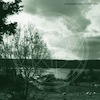 Originally released on CD-R in 2005, this vinyl only reissue of vocalist Jessika Kenney and violist Eyvind Kang’s collaboration is one of the inaugural releases on Stephen O’Malley’s new Ideologic Organ label. Both artists have worked with O’Malley in Sunn O))) but to expect anything remotely like O’Malley’s own music would be a mistake. This is quiet, contemplative, and fully acoustic; both artists explore the relationships between each others' craft. They intentionally break down the barriers between voice and viola and between playing music and singing.
Originally released on CD-R in 2005, this vinyl only reissue of vocalist Jessika Kenney and violist Eyvind Kang’s collaboration is one of the inaugural releases on Stephen O’Malley’s new Ideologic Organ label. Both artists have worked with O’Malley in Sunn O))) but to expect anything remotely like O’Malley’s own music would be a mistake. This is quiet, contemplative, and fully acoustic; both artists explore the relationships between each others' craft. They intentionally break down the barriers between voice and viola and between playing music and singing.
Thorughout Aestuarium, Kenney’s voice drifts into Kang’s viola like a river into the sea; the two merge into one and become indistinguishable from each other. In the opening moments of "Orcus Pellicano," my ears are bamboozled by this strange symbiosis of timbre. Together, Kenney’s voice and the viola form a third instrument that retains some of the individual character of both instruments but with another dimension that either on its own is incapable of creating. This idea of mixing two similar timbres to form a new middle ground between the two is reflected in the album’s title, an archaic term for an estuary.
Kenney’s interest in Persian music comes through strong on Aestuarium as she explores scales more in line with traditional Middle Eastern music than with western composition. Kang is more than adept both at following Kenney’s lead and in taking the reins himself; at times it is hard to tell who is following who as they almost become one Janus-like figure. On "Unnamed Figures," their respective performances become so entwined that it is hard to believe that one mind is not controlling both musicians. It sounds like Kenney is trying to make Kang play outside his comfort zone and at the same time Kang is pulling Kenney to a point where her voice is tested to its limits.
While I made clear that this is nothing like Sunn O))), it is easy to see why O’Malley would pick this album for his label. Kenney and Kang chase timbre and tone in the same way O’Malley and Greg Anderson do in Sunn O))). In this way, Aestuarium is more than a collection of songs by the duo, here Kenney and Kang have created deeply spiritual as well as conceptual music that could easily have come from a thousand years ago or from 2005. In any case, I wish I had heard this album when it first came out as I feel I have been missing out on something incredible for too long.
samples:
 
Read More
- Administrator
- Albums and Singles
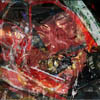 I don't think there could be a more apropos title for this slab of destruction from one of the innovators of noise as we know it. Rather than the handmade instruments and conceptual endeavors of The Haters, Jupitter-Larsen simply works with the sound of cars smashing into one another, which will either entertain or be as annoying as all hell.
I don't think there could be a more apropos title for this slab of destruction from one of the innovators of noise as we know it. Rather than the handmade instruments and conceptual endeavors of The Haters, Jupitter-Larsen simply works with the sound of cars smashing into one another, which will either entertain or be as annoying as all hell.
I for one have to say I am firmly in the "enjoy" camp on this one.There's a certain childishly destructive glee to be had in hearing the shattering windows and squealing tires, the same that drives people to secretly enjoy the vicarious thrill of seeing wreckage alongside the highway, as well as many people’s only motivation for watching automobile races:the potential danger of destruction.
Now, the thing is that this is essentially ALL this record is.That's not to say it is entirely repetitive, but the same sounds are used throughout, with a minimal amount of effects to be heard.The sides are discernible though:the A side is focused more on squeals and shrieking tires, while the B side is more of a metallic clattering, emphasizing the aftermath while the other side is the prelude to devastation.
The whole album reminded me a bit of David Jackman's Machine Gun Fighting, at least conceptually.There is a greater diversity of sounds and layering on this record though, which keeps it from getting too stale.It might not be the most complex sounding composition, but it doesn’t strive to be.Instead it's a gleefully violent collage that really takes the idea of "noise" to its logical end.No matter what though, it’s a record that could easily silence obnoxious neighbors if needed.
samples:
 
Read More
- Administrator
- Albums and Singles
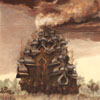 As I mentioned in my review of the split 7" a few weeks ago, these are easily two of my favorite artists working in the more experimentally focused metal scene (that currently doesn't have an inane genre tag, which I'm perfectly fine with). Unlike that single, this one sided LP has the two projects working collaboratively, with the results completely living up to expectations.
As I mentioned in my review of the split 7" a few weeks ago, these are easily two of my favorite artists working in the more experimentally focused metal scene (that currently doesn't have an inane genre tag, which I'm perfectly fine with). Unlike that single, this one sided LP has the two projects working collaboratively, with the results completely living up to expectations.
Jenks Miller's solo project Horseback has recently received wider exposure due to reissues via Relapse, but Horseback still remains far more complex than most other artists with a metal bent to their sound.Chicago's Locrian is now a trio after vocalist/keyboardist Terence Hannum and guitarist Andre Foisy added the accomplished experimental percussionist Steven Hess to their lineup last year.Coming off 2010's distinctly different LPs Territories and The Crystal World, they have developed into a unique balance of dark atmospheres and avant garde sounds.This release is partially a celebration of the upcoming Utech Music Festival, as these two are both the headlining acts, but it’s anything but a merchandising cash grab.
The shorter "The Gift" opens with heavily reverberated guitar noises and improvised percussion from Hess.Amidst the swirling chaos there’s guitar to be heard: rapid, sparsely effected notes that shine like a pinhole of light in the otherwise oppressive blackness.The vocals sound more like Horseback to me, so I'm guessing it’s Miller's guttural, pained vocals that instantly reminded me of Danny from The Shining.Half way in the drums lock into a more traditional rhythm, and the remainder would almost be a lush ambient piece if it wasn’t so heavy and evil sounding.
The longer "Our Epitaph" slowly lurches along over a sparse distorted bass and drum rhythm, which, when combined with the monastic, chanted vocals (which sound like Hannum, but I’m guessing), feels like a ritualistic chant, austere and focused.In the background a combination of guitar and synthesizer come together violently, slowly becoming the focus and engulfing the liturgical chants.
The thing is, this sounds not like a collaboration in the traditional sense but like a singular project that perfectly balances the influence of the individual parts.Miller's unique combination of black metal and old school minimalism perfectly matches Locrian's film-score like bleakness and juxtaposition of noise and structure.  New Dominions sounds like the work of both artists, but neither one in particular.It highlights both of their strengths, blended into a perfectly unified whole that's among the best I have ever heard in this currently unnamed category of experimental metal.I just hope this isn’t the only collaboration these two bands will unleash.
samples:
 
Read More


